Looking ahead to spring options
9th December 2023
A delayed 2023 harvest, followed by a particularly wet autumn hampered winter drilling, so spring cropping could be the only option for those farmers severely affected.
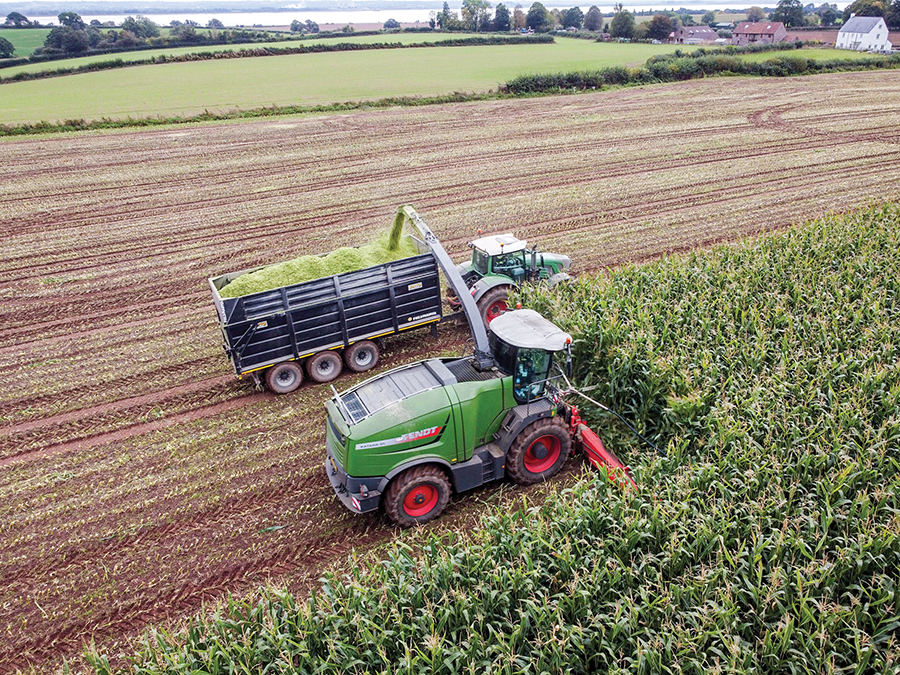
Well-considered spring crops allow flexibility in the rotation, reduce pressure on labour and machinery, as well as assisting with heavy grassweed burden control.
Maize: The “perfect” break crop in sustainable arable rotations
Maize has a lot to offer in terms of building sustainability into arable rotations with low input agronomy, efficient use of nitrogen and soil improvement opportunities just some of the benefits, says KWS maize specialist Andrew Cook.
It’s the “perfect” break crop for many crop production systems, but choosing maize varieties most suited to individual locations and end uses is key, he believes.
“Markets exist for forage maize, grain maize and biogas production; and whatever the end use, being able to maximise yields in the context of individual growing situations is critical.” Another key consideration is to match the heat units available in any particular locality to the varieties chosen, he points out.
“Typically, hybrids with FAO ratings of 150–160 are considered to be ‘ultra-early’ and these require up to 20% fewer heat units than later hybrids with an FAO rating of 200+, which are usually classified as mainstream.
“So, if you’re in a more marginal area, you’ll need to choose a lower FAO rating to get the most out of the crop and make the best use of your own individual situation.”
Drilling date key
Maize likes to put deep roots down and does not do well in compacted soils. Modern thinking is to deal with such areas individually rather than carry out wholesale heavy duty cultivation, Mr Cook says.
“It’s important to assess your requirements on a field-by-field basis. Subsoiling provides an enormous benefit – if it is needed – otherwise take the opportunity to make a considerable saving on machinery and diesel costs.
“When it comes to drilling date, this depends very much on location, although later-drilled crops seem to be the ones that have produced the best results in recent years.
“Drilling too early in potentially cold conditions runs the risk of poor germination and establishment that can be carried through the season resulting in later harvesting and variable yields and quality.
“There’s a growing school of thought that earlier-maturing ‘energy boost’ varieties, drilled at 7.5cm depth, are the most reliable way to produce consistent maize crops against the backdrop of increasingly variable growing conditions.
“Growers choosing ultra-early varieties drilled at the correct soil temperature – 8ºC in lighter soils and 12ºC in heavier soils – are generally the ones that achieve the best results.”
Looking at which varieties have delivered strong performance in 2023, Mr Cook says two in particular stand out.
“KWS Temprano has delivered strong yields and quality this year, particularly in regions with less than optimum maize growing conditions, whilst the clamp-filling variety Papageno has done particularly well in the more favourable areas.”
Another key benefit of such high yielding maize varieties is that they allow optimum use of organic sources of nutrition such as FYM and slurry to be made, he points out.
Soil improvement
Agronomy is relatively simple compared with other crops too, with no major diseases being prevalent and costly energy-intense spray applications negligible. Weed control is relatively simple, too, Mr Cook points out.
“Maize doesn’t like competition, so weed control is essential. A pre-emergence will take out any initial flush but also slow the re-growth of subsequent weeds.”
The winter period can also be used to improve soils and add valuable nutrients back ahead of the next crop, he adds.
Increasing demand for malting barley
One year on from its full approval for malt distilling use by the Malting Barley Committee (MBC), high-yielding spring malting barley Firefoxx, bred by Elsoms-Ackermann Barley, has continued to gain more support from growers, advisers, and seed merchants according to McCreath Simpson & Prentice (MSP) seed grain director, Laura Beaty. “Firefoxx is definitely a variety on an upward trajectory, and, at MSP, we’ve seen demand for seed double over the last three seasons. On parentage, it’s a Chanson/Acorn cross and, importantly, is not directly related to another popular variety in Laureate, so it’s offering growers a very different genetic background, bringing some much-needed diversity back into the spring barley market.
“[…] Its robust profile and earliness to harvest become stronger traits the further north you go. During a very challenging 2023 growing season in Scotland, where a significant percentage of spring barley was drilled a month later than it should, on-farm reports show that Firefoxx has proven its resilience with bushel weights, yields and grain quality all holding up well.
“For malt distillers, its grain quality, low screening levels and observed key trait of being less prone to skinning than its competitors are big plusses, and, with another distilling-only variety Sassy now starting to look outclassed on yield, we see Firefoxx as its natural replacement,” she confirms.
MSP agronomist Robbie King has been working closely with Firefoxx growers for three years, and sees the variety’s earliness as a key agronomic factor.
Mr King comments: “Any variety that allows growers to get some barley in the shed early, thus allowing us to begin transportation and storage, is a massive bonus. Firefoxx’s earliness also allows growers the option of an earlier entry for a cover crop.
“On disease control, it’s comparable with competitors, offering very strong resistance to mildew. It’s stiff-strawed, stands well and appears to perform consistently in all soil types. Despite this season’s drilling delays and late harvests, Firefoxx has consistently recorded many of our highest spring barley bushel weights and shown the lowest percentage skinnings from our post-harvest results. Both are important factors for malt distillers,” he confirms.
On grain quality and market potential, Simpsons Malt Limited assistant raw materials buyer Sarah Lugget says: “As a company we are moving thousands of tonnes of spring malting barley each week during harvest, so the benefits on logistics of an early maturing variety like Firefoxx are significant.
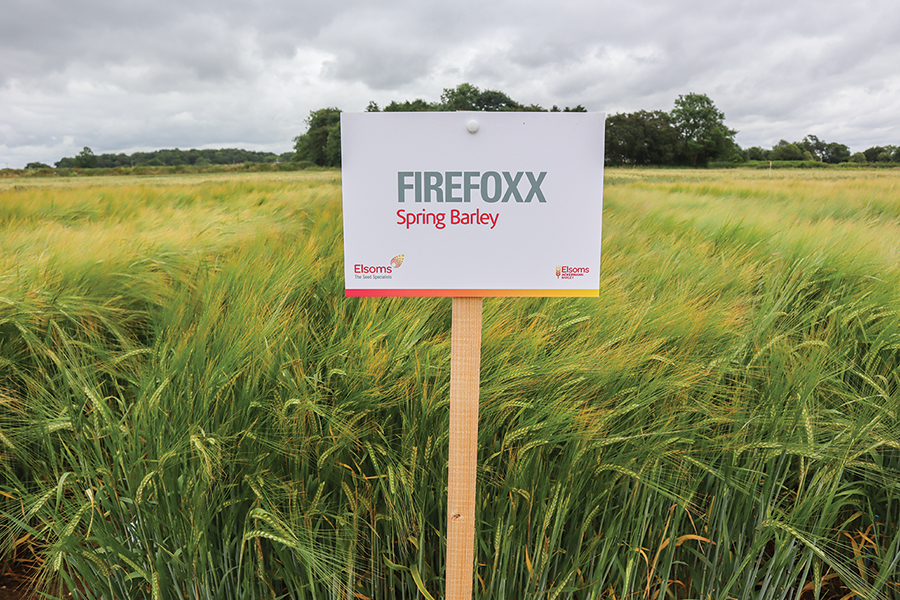
“Assessing this year’s harvest results, the overall quality of spring malting barley – regardless of variety – has been variable. However, when I look at the tonnage of Firefoxx grown in regions above the River Forth, it has more than held its own, achieving above average bushel weights for the season.
“My expectation is that the upward curve in demand should continue for the next couple of years […],” concludes Ms Lugget.
Having grown Firefoxx for the last three seasons, farmer Colin McGregor, of Garvock Farm, south-west of Perth, wasn’t able to drill the last 25% of his area of Firefoxx until late April, putting his crop under significant pressure.
Mr McGregor comments: “No two seasons are ever alike, but 2023 was exceptional given that we received all the right rain at the wrong times.
“An extended dry period during May wasn’t helpful for the spring barley grown on our lighter soils either. Then the rain came, but forgot to stop. On fungicides we used a two-spray program with a T1 comprising of prothioconazole + trifloxystrobin, adding plant growth regulator (PGR) trinexapac-ethyl and manganese to the tank mix on 15th May. On 17th June at T2 we went with benzovindiflupyr + prothioconazole + folpet.
“Although delighted with final average yields of 7.5t/ha, it really was a game of two halves with some of the earlier drilled Firefoxx on our heavier land achieving over 8t/ha. Importantly, the crop met distilling specification with average bushel weights of 68kg/hl, average skinnings of 3.5% at intake, and low grain nitrogen levels. A solid set of results given the weather, drilling delays and stop-start harvest.
“For 2024, we plan to drill 243ha of Firefoxx with high yield, good standing power and crop quality the main reasons behind our decision. To come through such a tough year at 7.5t/ha was remarkable […],” he concludes.
Considering sugar beet?
To find out how the 2023/34 sugar beet campaign is faring so far, Farmers Guide spoke to British Sugar’s head of commercial agriculture, James Little, in late October. At the time, Mr Little said the harvesters in York were running despite the wet weather, having moved past the Early Beet Bonus and into the main contract.
Commenting on the health of the beet this year, Mr Little explained: “Canopies are looking fantastic, with a very healthy root crop below. So as long as we don’t encounter a hard frost, the harvest overall is looking promising. At the moment we’re predicting a yield average of mid-70t/ha cross the whole campaign, with a mix of growers wanting to lift early and plant something behind the beet, and other growers wanting to lift in the new year in order to hit the later delivery bonus.
“Amazingly, we have already had a grower hitting over 100t/ha, with contracts completed early,” he shared.
The area of beet planted this year increased to just under 100,000ha, versus around 88,000ha last year, and yields are also far better compared to those following the summer droughts in 2022.
Mr Little continued: “We’ve had lovely growing conditions with intermittent rain and sunshine; the good canopy has provided a great opportunity for photosynthesis. Sugars currently are looking at around 16.5% on average across the entire campaign, but given the good yields in terms of tonnage, it’s looking promising.”
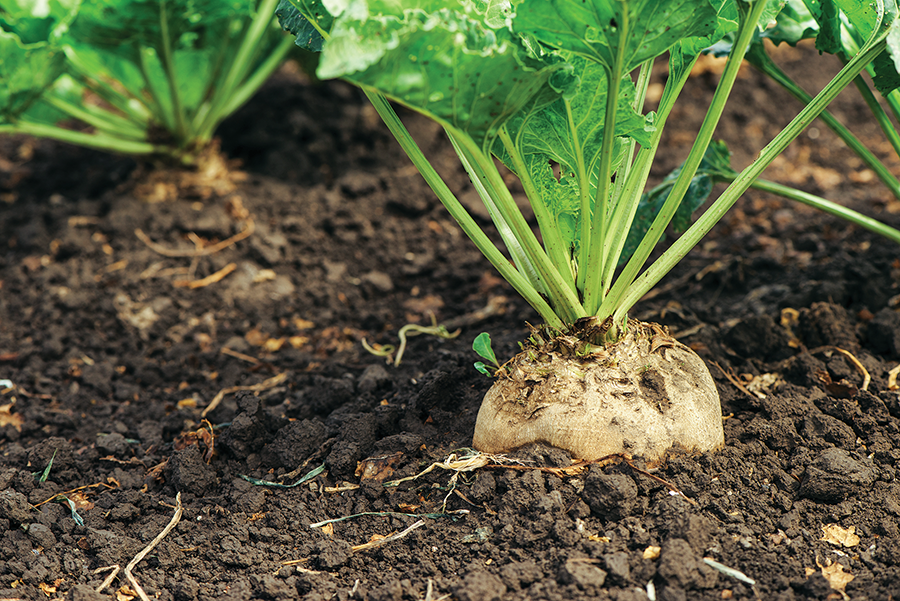
Disease-wise, Mr Little explained that there’s been a bit of beet moth this year, but overall disease pressure overall has been low. The emergency authorisation for Cruiser has, he says, played a real part in keeping virus yellows at bay.
Through BBRO, funded by British Sugar and NFU Sugar, they are looking to try to develop the “crop of the future” – using crop developments across the grower base to ultimately become sustainable in the long term, both financially and environmentally.
With no official contract price for 2024/25 announced at the time of writing, predicting the number of beet growers for the next campaign is tricky. But in terms of benefits to the rotation, Mr Little says it’s a key valuable break crop. In the current climate of alternative break crops, it’s an attractive proposition – with the price of break crops such as OSR dropping significantly of late.
There is some short-term apprehension around weather, Mr Little explained, but he pointed out that the key is working with the growers and contractors to get the contractors on the right land at the right time. “It’s a long-term, positive partnership between British Sugar and growers,” he commented.
British Sugar offers the following tips and advice for farmers who are considering adding beet to their rotation:
- Request a crop economics meeting with a British Sugar contract manager to discuss this year’s contract pricing and proposed bonuses
- Take advantage of the most suitable seed technology for your farm, selecting varieties for BCN, AYPR, early sowing and Conviso technology
- Instead of investing in all the equipment required, make use of the network of contractors who play a key role, from seed preparation, drilling, spraying, lifting and haulage
- Discuss your rotation with a British Sugar account manager in order to agree your drilling and harvest strategy
- Use BBRO’s benchmarking and yield enhancement tools to achieve your crop’s potential
- Speak to a British Sugar account manager to discover the growing opportunities on offer, including the potential to rent land through British Sugar Self-Grow.
Sugar, fodder and energy beet varieties for 2024
Strube offers Morgan, Stewart and Button sugar beet varieties for the 2024 cropping season, delivering growers competitive yield in combination with other valuable traits, the breeder says. All three varieties share the Strube canopy characteristic, giving good early ground cover and later, a full canopy, Button and Stewart offer lower-than-average bolting performance and can be sown as soon as conditions reasonably allow. Morgan is suited to drilling after mid-March.
For growers who experience beet cyst nematode (BCN), Button offers tolerance to protect against yield loss, combined with excellent establishment.
The focus for Strube Research’s classic breeding is to select for key traits in addition to high yield. The company‘s key target areas are to breed for virus yellows, cercospora, beet cyst nematode and ‘strong‘ rhizomania (AYPR) tolerance. In addition, Strube also considers the needs of the processor to optimise sugar extraction. In this regard, all three Recommended List (RL) varieties demonstrate very low total impurities, supporting optimised sugar extraction as a consequence. Morgan and Stewart have the lowest total impurities on the 2024 RL.
For the fodder beet and energy beet markets, the breeder‘s high dry matter varieties Clemens, Degas and Gahan are proven to offer consistently high fresh weight and dry matter yields, derived from excellent field establishment and performance stability. In turn, this offers excellent feed value to the stock farmer and AD operator alike for cost per kg/dm and energy.
Pean and bean varieties bring a touch of ‘genius’ to spring cropping
Two spring bean and two combining pea varieties from breeders LS Plant Breeding Ltd (LSPB) head up the 2023 PGRO Descriptive Lists (DL) and bring a set of positive agronomic characters for pulse growers planning their 2024 spring cropping.
For spring beans, the newly-added variety Genius sits at the top of the PGRO DL for 2023, with the highest seed yield – just above Lynx, which LSPB says is the market-leading spring bean.
As well as an uplift in yield above Lynx, Genius has a larger seed size with the same earliness of maturity and standing ability.
Spring bean Yukon offers a premium quality that is reflected in its high thousand seed weight. It also has the highest resistance to Downy mildew and earliest maturity on the DL.
Grower experiences have shown it is around 14 days earlier than most spring beans in most practical farm situations. Indeed, its earliness over other varieties may have had a negative influence on yield figures in official trials.
The range of LSPB pulse varieties continues with combining peas where Carrington and Butterfly green peas lead the PGRO Descriptive List.
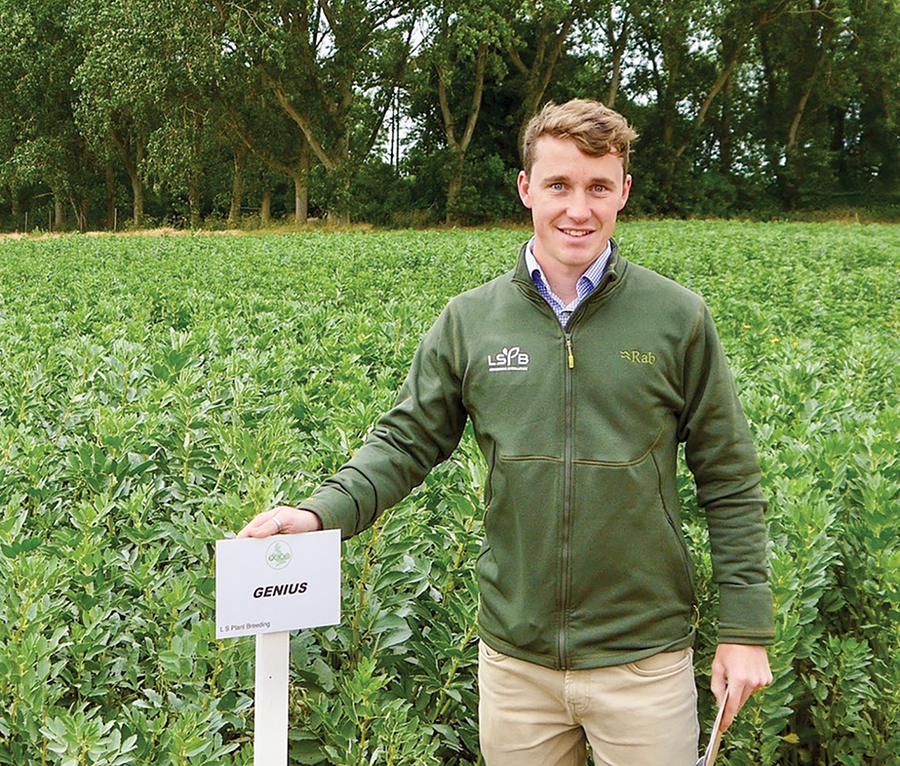
Carrington is the highest-yielding green pea variety on the DL with the highest equal resistance to downy mildew and good standing power. It is providing good samples – especially for colour.
Green pea Butterfly is close to Carrington on the list with a very high yield, very early maturity, and an equally strong standing power. Samples underline its large seed size and good colour.
In common with all LSPB combining pea varieties, Carrington and Butterfly have strong disease resistance profiles for the key diseases including resistance to pea wilt.
Michael Shuldham, LSPB product manager, sums up LSPB’s offering to growers planning their spring pulse cropping: “We are pleased to have a comprehensive range of spring bean and combining pea varieties, including the top-of-list varieties discussed – as well as Takayama, the highest yielding marrowfat pea.
“These give growers a very wide choice of agronomic characters as well as high yields to suit their farm and rotations.
“For the future, we have promising candidates in the pipeline – including LVC (low vicine/convicine) spring beans which will help to widen the market for spring beans and do our part in developing the future UK pulse crop.”
Alternative break crops
In 2022, wheat reached £300/t and OSR reached £900/t and as a result, so many growers went headlong into growing wheat and OSR in autumn 2022. This was bad news for break crops in spring 2023, with a significant reduction in the area of many alternative options. Since then, however, we have seen sharp declines in the price of wheat and OSR, and more turbulent times for OSR growers having to battle pests and disease. As a result, there is renewed interest in break crops for spring 2024.
Soya: Good on the right ground
Soya has had its challenges, but remains a good option on the right ground (light/medium land). Disappointing yields have been the main historic bug-bear; however, soya prices have risen relentlessly in recent years and a tonne of UK-grown soya is worth over £500/t. This high value has offset the lower yields, and the gross margins are now quite attractive.
According to Soya UK managing director, David McNaughton: “After difficult harvesting in 2019 and 2020, we saw the soya acreage begin to drop away; however, the crop remains an attractive option and we are anticipating an uptick in 2024.”
Soya also has other attributes – there is a reasonable selection of chemistry for weed control, and soya is rotationally compatible with peas and beans, so growers struggling to expand their area of legumes will have a good option in soya.
Another useful aspect of soya, is its easy market-acceptability. In any given year, virtually all samples of all grades will see acceptance at full value.
Soya is also a very good nitrogen-fixer, which is good news for growers, since increasing the area of legumes on farm will be a key part of farm decarbonisation.
“Prospects for 2024 are upbeat, with the price expected to remain strong going forward,” shares Mr McNaughton.
Light ahead for lupins
Mr McNaughton goes on to say that interest in lupins continues to grow. The resurgence in soya feed costs and supermarket pressure to remove soya from animal diets, is leading many growers to look at lupins as an alternative high-quality protein source.
“We are seeing a lot of growers taking up lupin-growing – either as wholecrop in mixture with spring triticale, or just as a crop of straight lupins for combining dry.
“Again, factoring in the fact that lupins are great nitrogen-fixers and we add in the surge in fertiliser costs, it is easy to see why there are a number of advantages to growing lupins on livestock units as a home-grown feed.
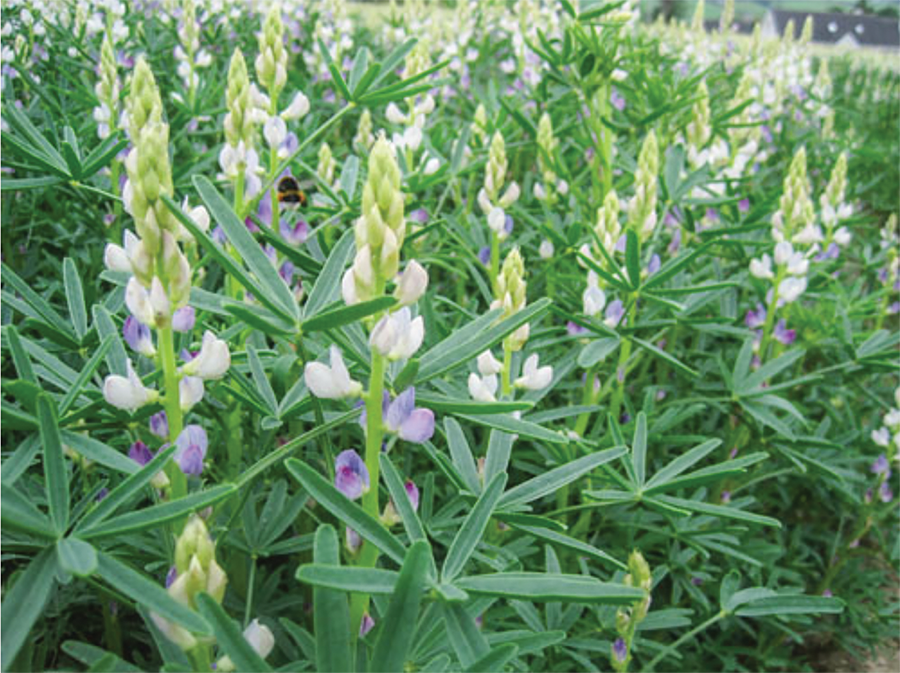
“In addition, like soya, lupins can be grown in the same rotation as peas and beans without invalidating the pea or bean break.
“The perennial issue for lupins however, has always been a lack of a formal market, and, frustratingly, this remains as elusive as ever. Until a large feed manufacturer is prepared to make the switch from imported soya, to using lupins in at least some of their diet formulations, the lupins will remain hobbled by lack of market. This, in turn will mean that arable growers will struggle to find a market if they grow lupins – which is incredibly frustrating for a crop, where the margins, the agronomy, and the true ability to replace imported soya, is there for all to see.
All the ingredients are there for the UK to have a large and successful lupin industry supplying the feed sector soya-grade protein, and that day is coming closer with more supermarket/environmental pressure to move away from soya, and with the increasing cost of imported soya, perhaps lupins will soon get their day. Meanwhile, UK livestock growers will continue to grow lupins for direct feeding and this will continue to expand.”
Birdseed sector
“War in Ukraine has had a distinct impact on our millet business,” Mr McNaughton says. “Previously, Ukrainian millet would have accounted for 75% of the UK’s annual tonnage, but with the war, the availability of Ukrainian millet has dropped significantly. As a result, UK buyers are looking to buy closer to home, and we are expanding our millet acreage quite significantly as UK buyers really like the light colour of Mammoth – our white millet – and the deep red colour of Minotaur, which is our new early red variety.
“Growers are also getting used to growing millet, and with it being an easy, low-input crop, we can see a lot of attraction for growers looking for a simple, low-input crop that requires little fertiliser.”
The other big impact has been on the price, with millet typically being worth well over £350 per tonne – making the gross margins really very attractive. “Historically, we would have seen millet values around £100 above the value of feed wheat, but at the moment, we are seeing values more like £200 over feed wheat,” Mr McNaughton continues.
“Yields have been quite variable this year with some growers doing as little as 2.0t/ha (where the crop was caught in the drought) through to some growers getting near 5.0t/ha.
“Five tonnes per ha at £375/t will turn a very nice margin for a crop with growing costs as low as £250/ha,” concludes Mr McNaughton.
Growing hemp successfully
Hemp has the potential to reduce greenhouse gas emissions by up to 140% and 540% compared to oilseed rape and sugar beet respectively when grown for biofuel. It smothers weeds, and doesn’t suffer many diseases. However, the legislation surrounding it is complicated.
After completing a final dissertation in 2019 on the feasibility of growing hemp as a break crop, for an MSc in Rural Business Management, Hemp North founder Hugh Wrangham realised that on paper, hemp ticked all the boxes. He and his business partner, Alistair McLeod, decided to launch the company and give hemp growing a go.
After obtaining the necessary licences, Hemp North, located in North Northumberland not far from the Scottish border, sowed its first hemp crop in 2021. The farm is approximately 600ha of various soil types and grows predominantly winter cereals, OSR and field beans, now in rotation with industrial hemp.
“Our objective was to show that hemp is an environmentally-friendly and viable diversification option for conventional family farms,” explained Mr Wrangham. “Grown as a sustainable break-crop, hemp delivers four times the CO2 sequestration compared with the same area of forestry, and delivers an additional revenue stream through the sale of British-grown highly nutritious ‘super-food’ hemp seed products.”
Having made the decision to outsource the production of hemp seed oil, Wrangham looked at ways of dehulling the hemp on farm and considered several solutions that would deliver hemp hearts.
In addition, Wrangham needed to consider how the harvested hemp seed would be dried and cleaned.
“To overcome the challenge of how to dry our hemp seeds quickly to preserve the quality, McArthur Agriculture supplied us with a Mecmar drier,” said Mr Wrangham.
Director Scott McArthur also showed Mr Wrangham the JK Machinery range of cost effective post-harvest equipment, including cleaning and dehulling solutions.
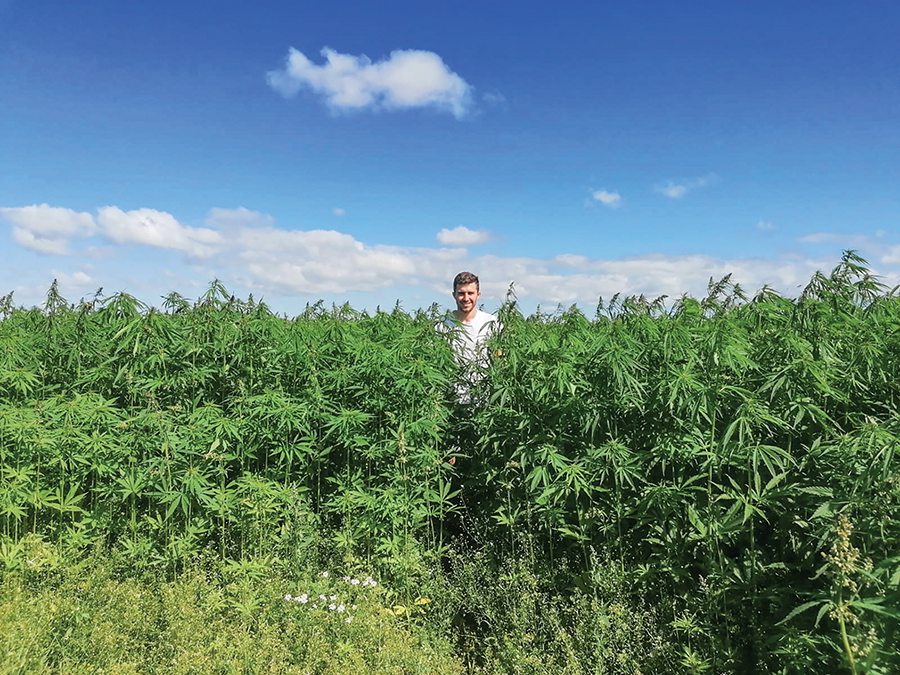
On a relatively low budget and with a lack of knowledge of the necessary process but with help and advice from Mr McArthur, Hemp North designed a DIY dehulling facility.
“Working with Scott, we kept the facility modular and relied on gravity feeds and good old-fashioned manual labour to transfer the hemp seed between different processing stages. This allowed us to trial the system, learn the methodology and constantly tweak the parameters to improve yields and efficiencies,” continued Mr Wrangham.
The post-harvest processing starts with the harvested hemp seeds being dried, if necessary, in the Mecmar drier. Once dried, the hemp seeds are cleaned and graded via JK Machinery’s JCC 05 VibroCompact vibratory sieve cleaner before going into store.
Despite the steep learning curve of the first year, Mr Wrangham says the business has quickly established contracts and sales. The company is rapidly building up its e-commerce site to handle direct sales to consumers, and is seeing growing demand in its wholesale business with online health food stores, local shops and zero-waste stores.
Using farm-saved seed for spring cropping
The recent heavy rainfall has brought autumn sowing to a halt for most farmers. So now is a good time to plan your spring cropping options. Some farmers may decide to grow peas or beans in 2024, but for many farmers the best option could be spring barley.
Good establishment in the spring is the key to good yields and crop quality. Well-established crops have a better root structure which helps the crop to withstand prolonged dry periods and gives better access to nutrition in the soil. Trials have proved that sowing big seed with the appropriate seed treatment is the best way to get a rapid establishment.
Farm-saved seed will be the most cost-effective option for most farmers. So, it is important to keep some seed in store if you are selling your crop before Christmas. If you want to check the germination of your seed for the spring, then now is good time to contact your NAAC mobile seed processor to request a test. When planning seed treatment nutrition on your seed, then one of the key nutrients to consider with spring barley is manganese. The best way to provide manganese in the early stages is by using a seed treatment. That way the crop does not suffer a check in growth during the first few weeks.
Your NAAC Mobile Seed Processor can assist you in getting your spring-sown crop off to the best possible start – visit www.naac.co.uk
Read more arable articles here



